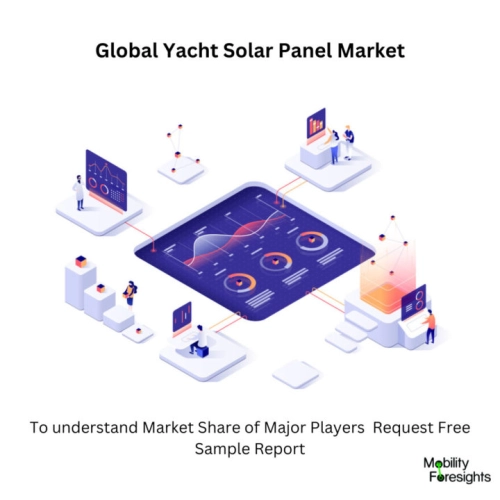
- Get in Touch with Us

Last Updated: Apr 25, 2025 | Study Period: 2023-2030
On solar boats, the solar power systems typically include batteries, charge controllers, inverters, and solar panels. Charge controllers stop batteries from overcharging while batteries store the energy generated by the solar panels.
Sunlight energy is captured by solar panels, also known as photovoltaics, which then transform it into electricity that can be utilised to power buildings or residences. These panels can be used to extend a building's electrical supply or offer power in outlying areas.
Uniquely equipped to convert light energy into motion are solar boats. Commercial oceangoing ships and pleasure boats can both be powered by environmentally beneficial solar energy. This revolutionary design benefits both the environment and the passengers.
One of the pioneers in the solar boat market, Silent Yachts just released an 80-foot tri-deck catamaran with more than 1,200 square feet of solar panels.
The 80 Sunreef Power can run exclusively on renewable energy at a slower cruise speed if its solar panel surface is maximised.
To achieve the highest solar power efficiency possible, Sunreef Yachts is creating cutting-edge solar boat solutions for the whole line.
When you're out on the water, solar panels designed for use on boats are a terrific option as a source of backup power. Without having to pay fuel for an obtrusive gas-powered generator, solar panels can keep your equipment operating and recharge the boat's batteries.

The Global Yacht Solar Panel market accounted for $XX Billion in 2022 and is anticipated to reach $XX Billion by 2030, registering a CAGR of XX% from 2023 to 2030.
New information on the SILENT-60, a 60-foot catamaran with 42 solar panels and two electric propulsion engines supported by 286 kWh of battery capacity, has been released by solar boat engineer and designer Silent Yachts.
The SILENT-60 will also be equipped with a 9â13 square metre kite wing, creating additional clean power to pull the yacht in addition to the solar-powered vessels that Silent Yachts offers that are all individually designed.
After sailing more than 75,000 nautical miles across the globe, Silent Boats came to the conclusion that there had to be a more efficient way to power yachts using sustainable energy.
The option will now be available on all Silent Yacht models, however the SILENT-60 will be the first boat with a nine or 13 square metre kite wing.
The small kite is released and begins to float away on the water's surface before being pulled taut and taking off into the air.The kite starts to trace a in the sky when it reaches its ideal flight altitude, adding extra force to pull the solar yacht.
| Sl no | Topic |
| 1 | Market Segmentation |
| 2 | Scope of the report |
| 3 | Abbreviations |
| 4 | Research Methodology |
| 5 | Executive Summary |
| 6 | Introduction |
| 7 | Insights from Industry stakeholders |
| 8 | Cost breakdown of Product by sub-components and average profit margin |
| 9 | Disruptive innovation in the Industry |
| 10 | Technology trends in the Industry |
| 11 | Consumer trends in the industry |
| 12 | Recent Production Milestones |
| 13 | Component Manufacturing in US, EU and China |
| 14 | COVID-19 impact on overall market |
| 15 | COVID-19 impact on Production of components |
| 16 | COVID-19 impact on Point of sale |
| 17 | Market Segmentation, Dynamics and Forecast by Geography, 2023-2030 |
| 18 | Market Segmentation, Dynamics and Forecast by Product Type, 2023-2030 |
| 19 | Market Segmentation, Dynamics and Forecast by Application, 2023-2030 |
| 20 | Market Segmentation, Dynamics and Forecast by End use, 2023-2030 |
| 21 | Product installation rate by OEM, 2023 |
| 22 | Incline/Decline in Average B-2-B selling price in past 5 years |
| 23 | Competition from substitute products |
| 24 | Gross margin and average profitability of suppliers |
| 25 | New product development in past 12 months |
| 26 | M&A in past 12 months |
| 27 | Growth strategy of leading players |
| 28 | Market share of vendors, 2023 |
| 29 | Company Profiles |
| 30 | Unmet needs and opportunity for new suppliers |
| 31 | Conclusion |
| 32 | Appendix |